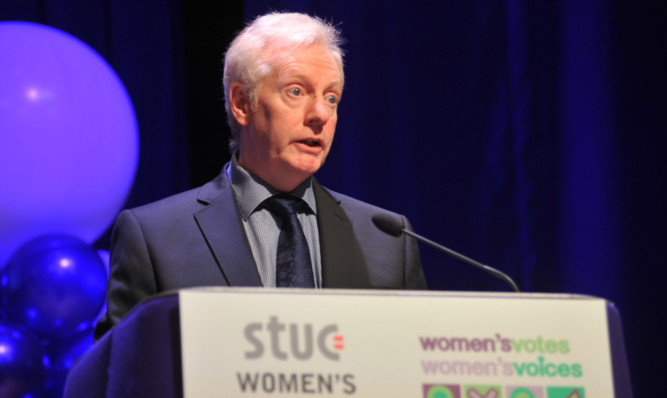Scotland’s trade union body has blamed successive governments’ public sector policies for poverty.
Speaking in Dundee, Grahame Smith, general secretary of the Scottish Trades Union Congress (STUC), said managerial practices imported from the private sector were undermining public services.
Addressing the 88th STUC Women’s Conference, Mr Smith said: “The scale of poverty that persists in our country is a scandal.
“Austerity, welfare cuts, cuts in local government services, all driven by central government, must take their share of the blame.
“But in areas where funding is supposedly protected, in health and education, what we have is a failure of policy. Policies in education and health have had insufficient focus on alleviating poverty.
“We have seen a reform agenda in these areas by successive Scottish Governments dominated by an obsession with managerial practices imported from the private sector, many of which failed there.
“Centrally-determined, top-down-driven performance indicators. Ill-conceived targets and a fixation with audit.
“It seems that the demands of accountants for fundamental changes in our NHS are given more credence by politicians than the views of the over-worked nurse.
“Similarly, policy to improve attainment in schools is once again focused on testing.
“Testing is not a policy that will improve attainment. The quality of teaching and the teaching environment will improve attainment.
“But politicians seem obsessed with testing because it is something that can be measured.”
Mr Smith added that politicians should have more trust in the experience of professionals within education and healthcare, rather than focusing on targets.
He said more investment is needed in public services, meaning that the well-off should pay their “fair share” of tax.
He added: “It has been clear from the recent party conferences that heath inequality and education are likely to be the key policy areas under focus in the run up to the Scottish elections next year.
“If that is to be the case then let’s have a debate based on the evidence of the policies that work and that will have a real impact on reducing poverty and inequality not just on what can be measured.”
Other guest speakers at the two-day conference included Scottish Government Health Secretary and Dundee City East MSP Shona Robison and the former leader of Labour in Scotland, Johann Lamont.
